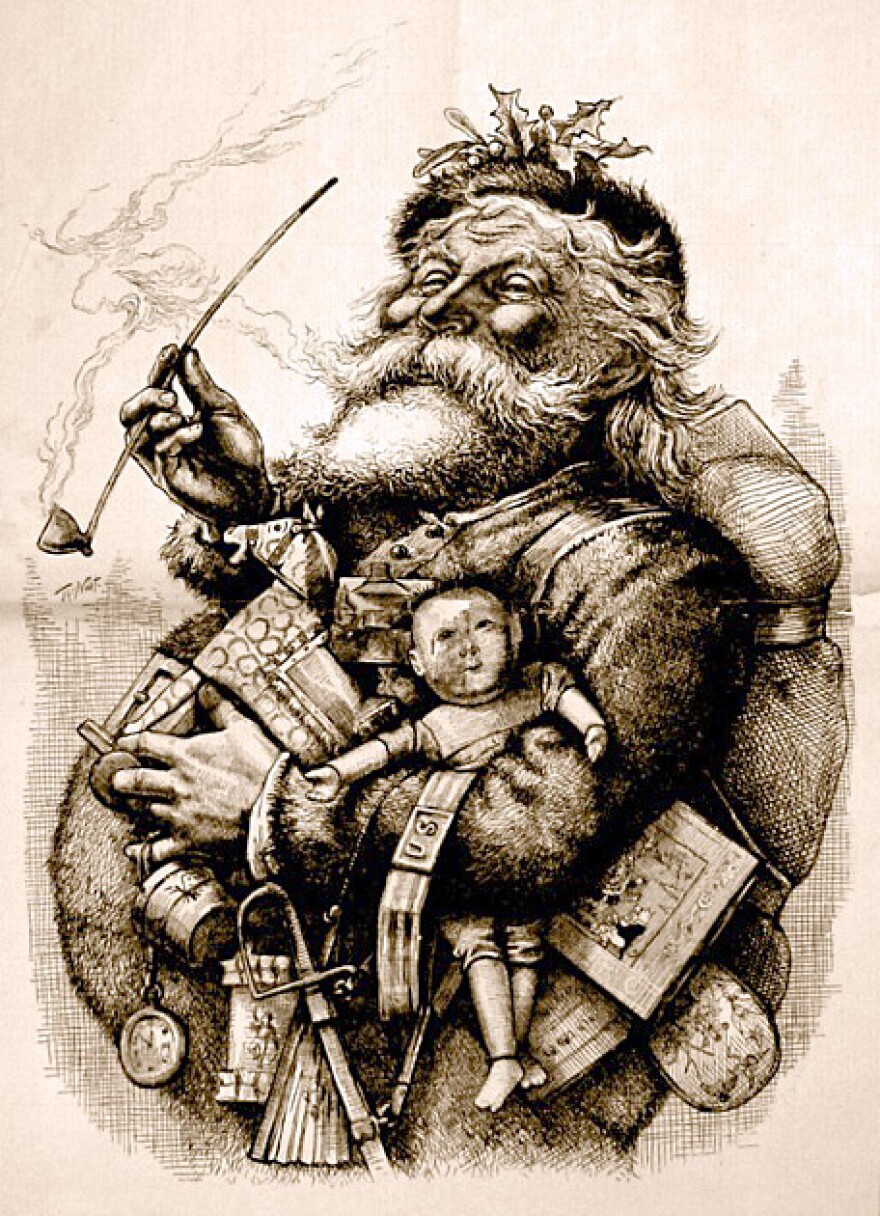I was Christmas shopping with my five year old when it hit me—something I hadn’t thought about in a long time. When I was around his age, I tried to rob Santa Claus.
My best friend and I convinced our parents to let us have a sleepover on Christmas Eve, then we took turns standing on his bed, holding a metal detector up to the ceiling. It was a simple plan. When Santa's sled landed on the roof, its rails would set off the detector and we'd sneak downstairs to steal his bag of goodies.
Unfortunately, we fell asleep, delaying our life of crime, but that memory got me wondering: Why do kids go so crazy about the whole Santa thing? So, I asked a psychologist.
“It is really the most widely encouraged childhood fantasy,” says Dr. Linda K. Schmechel. “And when you get more than one child and they start sharing ideas, that gives it an impetus for action.”
Schmechel was quick to note that it's rare for children to try to rob Santa, and she should know. She conducted one of the first studies on Santa Claus and Child Psychology. Schmechel discovered that many Christian children think Santa and Jesus are the same person—a Santa Jesus, if you will—as they’re celebrated on the same day.
She also found that Santa’s influence crosses religious borders. For example, she studied a Jewish family whose young daughters invented a kosher Santa alternative, the Hanukkah Bird.
“This family's girls had never been encouraged to believe in Santa unless it was through the media. Their family did not participate in that,” Schmechel explains. “But they had developed the idea of a Hanukkah Bird who was very parallel in the way it flew all over and gave gifts to people.”
When Schmechel told the girls’ parents about the bird, “their jaws just dropped because they had no idea whatsoever.” Schmechel says it was her “first realization that the larger society plays a huge role in children’s beliefs, whether it be in Santa Claus, in helping other people, or in brushing your teeth.”

If we have this Santa figure powerful enough to permeate our culture and drive kids wild, what happens when they find out he might not be real? I went back to the Fairfield Commons Mall to conduct a considerably less scientific study.
“I found presents in my mom’s closet,” says Cara Van Der Horst. “And I was like, ‘where did these come from? I thought Santa brought all the presents.’ And she wasn’t very good at lying and covering it up. So, I found out. I was not a happy person.”
Everyone I spoke to had a similar story, and they all used terms like “heartbroken” and “depressed” when they talked about losing faith in Santa. Kristi Pickering called the experience “traumatizing.” Yet no one really seemed sad about it. They all laughed.
Schmechel says that might be because they’ve become co-conspirators in the Santa myth. “A lot of children then become helpers in instilling and perpetuating the belief.”
So, when we lose our belief, we then perpetuate what we no longer believe. While it may be hypocritical, it sure is fun. We go from believing in Santa to being Santa—or at least, some of us do.
Steve Haws has been taking toy orders from children for 40 years, but he’s not a mall Santa. I met him at a Christmas Party at the Glen Helen Nature Preserve. His beard and suit are authentic, and his attitude is, too.
“Being Santa,” Haws says, “you have got to have a little decorum and be good about it, and love them all, just like they're yours.”
What does Mr. Haws say to those who don't believe?

“There’s a Santa Claus,” he says. “Definitely a Santa Claus. You have to sometimes work around some bad things in your life, but there's always a Santa Claus. You need to look out and see who's giving things to other people. I'm not talking about gifts. I'm talking about love, or just good feelings. Making them feel good about themselves. And that's what it's all about. Feeling good about yourself. It's a lot easier to believe in everybody else when you do that.”
Talking to Haws is enough to put anyone in the holiday spirit, and it was enough to make me believe in Santa Claus again. But this time around, I won't try to rob old St. Nick.





